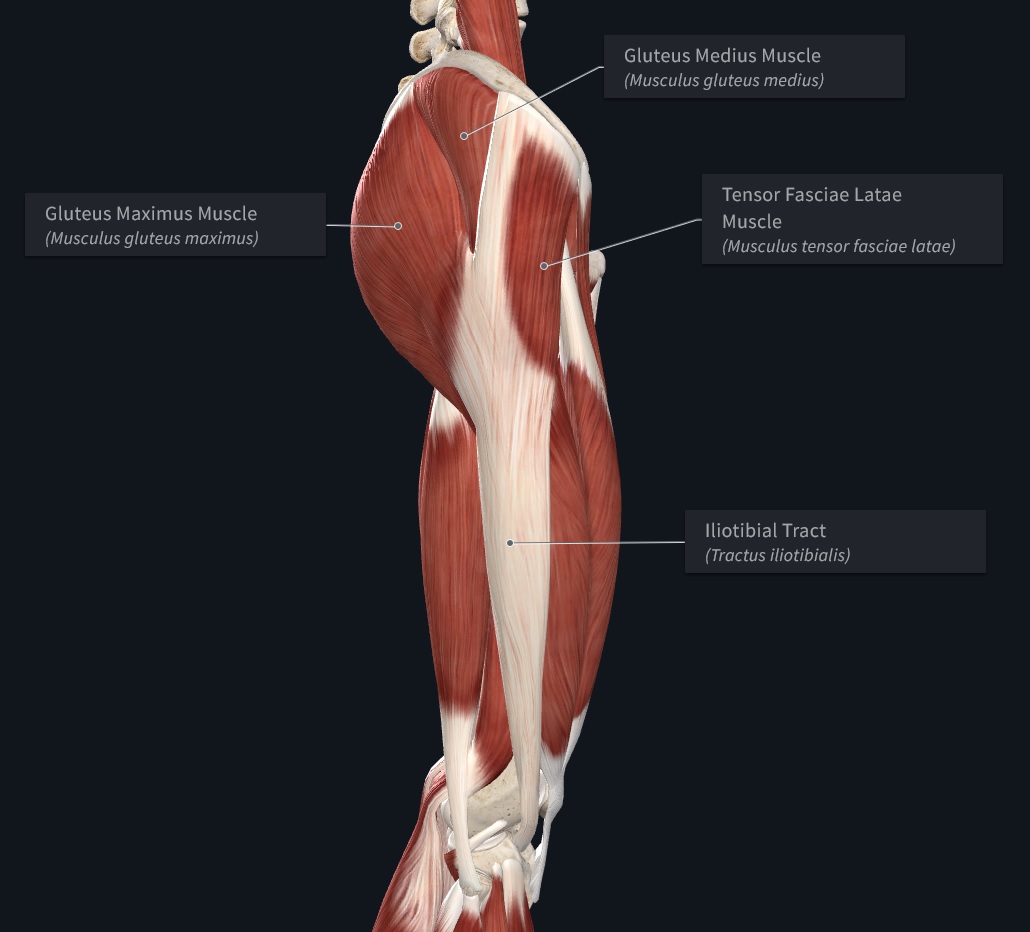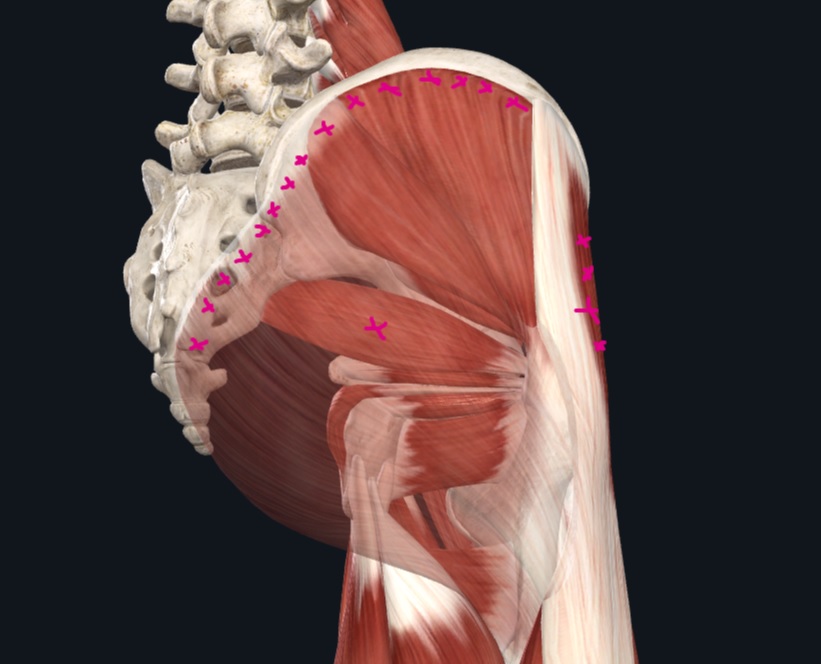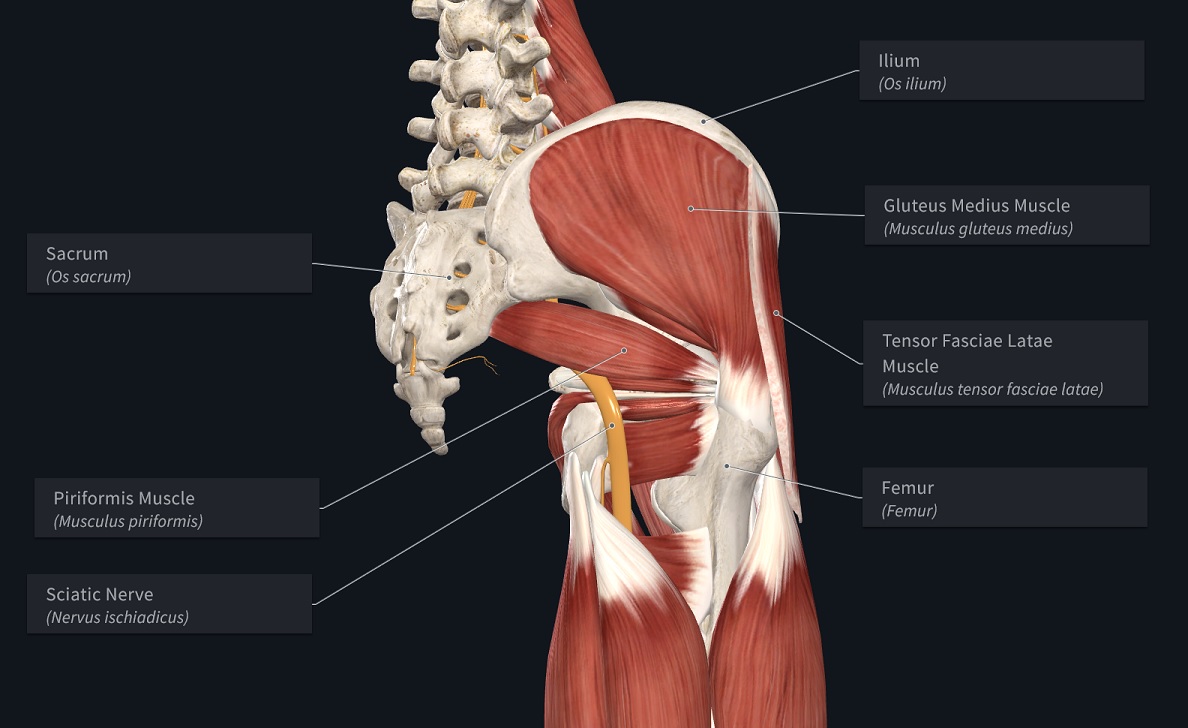Blogs - Further Information and Subjects of Interest
Here are some thoughts, extra information and other areas that interest me. If you have any comments, I am always glad to hear them and you can contact me as detailed.
Blog List
- Do You Suffer from Lower Back Pain?
- IT Band Syndrome - What it is and What to do About it
- Sciatic Pain - What it is and What to do About it
- Body Analysis and Postural Correction Training
Do You Suffer from Lower Back Pain?
Do you struggle to stand up straight?
Do you find it hard to walk as your back is so tight?
Have you been thinking you need a back brace?

Without looking at the issues of structural scoliosis, fractures of the back, or issues within the bones of the spine, there are two forms of back pain.
Acute pain, caused when you do something “stupid“, like lifting something whilst twisting, and chronic pain, which started some time ago often without a specific incident.
Mild acute back pain can often be fixed quickly and easily by relaxing the relevant muscles, often including the two Quadratus Lumborum situated between the hips and lower ribs next to your spine. The pain disappears and after a night’s rest life can be continued without issue.
Chronic back pain will have many causes, but will likely include a sedentary lifestyle, too much time spent sitting down maybe in an office, in a vehicle, or at home. In this case the lower back is trying to compensate for the weakness in other muscle sets.
The pain may first appear to be an acute pain, but it comes on whilst say picking up a pencil, or just turning around, obviously something that should be completely okay to do, but is in fact, the “last straw“ for your back‘s muscle structure.
For this and severe acute pain for example, from a prolapsed disc, you would need to step back from your normal life and look at how you are moving and what you are doing to keep your back in good health.
At this point you may think of buying a back brace to help support your weak back to ease the pain, but this is not the long term solution. You may find that a brace can help in the immediate need whilst performing a particular task, but it is a “band aid“ and should only be used for fairly short periods.
What you need to do, is to take an interest in your body, look at what you have been doing and adapt your movement, exercise and activity to allow your body to heal.
Many people when asked cannot tighten specific muscles. Can you twitch your backside? That‘s the starting point, to be able to put a finger on your backside and feel the muscle underneath move to your mental command.
Good massage will help ease your muscles and can provide a detailed assessment of the issues within them but, it too is passive and will not “fix“ your body. There needs to be an active intervention as well.
Based on the initial visual and massage assessment, I can provide you with a structured program to fit with your lifestyle to help you regain your former self and live with less pain without need of a brace.
Note: Back pain radiating down to your toes can be potential serious, if you have this you should first contact your doctor.
To book your I want to make myself better appointment, either call or email me.
IT Band Syndrome - What it is and What to do About it

Following on from last week’s article about Sciatic Pain, I‘ve decided to look at the IT Band as it is often involved at the same time.
The IT Band or Iliotibial Band to name it in full, is a long and very strong fibrous tendon that connects the pelvis and pelvic muscles to the Tibia, just below the knee, where it stabilises the knee and assists in knee extension.
IT Band syndrome is often diagnosed when the IT Band has become tight causing clicking on the knee as the knee joint is bent, a burning sensation on the side or over top of the knee, pain in the Tensor Fasciae Latae (TFL) and hip, or greater trochanteric bursitis. If you have any of these issues and you feel along the outer thigh trouser seam line, you will find what feels like a solid piano wire, that‘s the ITB and it‘s tight, particularly just above the knee.
So, what causes the IT Band to get tight? You only need to look at the anatomy image above to see the main culprits, the Gluteus Maximus and the Gluteus Medius. If either of the two Glute muscles aren‘t doing their job the TFL tries to take over and because its only a small muscle it can get over used, become injured and then shortens to try to guard against any further injury.
So, whilst it is obvious that the Glute Max is attached to the IT Band, what does the Glute Med do? It connects to the top of the Femur on the bony promontory by the hip and it is responsible for the movement of the leg away from the midline (abduction). When it is weak (see last week“s post), the other muscles, mainly the TFL try to compensate.
Now to debunk what many articles suggest, you cannot stretch the IT Band, it“s like a thick leather belt. Anatomists have successful hung huge weights from a dissected IT Band to show that they don“t stretch! There is very little benefit in foam rolling the IT Band.
Self Help
What you can do however, is use a massage ball or tennis ball to apply gentle pressure to the TFL muscle to enable that to relax. This YouTube video explains what to do.
To book your I want to make myself better appointment, either call or email me.
Sciatic Pain - What it is and What to do About it

Many people suffer from pains in their backside, tightness down the side of their thigh and if they are really unfortunate full-on phantom sciatic pains, that travel down towards their feet This often shows up as a pain on the outside of their calf. I‘ve been there, done that and got over it!
Most people sit down too much nowadays, it‘s our way of life and it‘s causing a lot of issues. As a simple test poke your backside in the middle of the backside, level with the hip (the middle cross). If it‘s tender you need to do something about it.
The backside muscles, the glutes, are designed to keep you standing, to be part of the muscle chain that supports your upper body and provide strength to your movements in your legs. However, when we sit down, they are kept stretched long in a permanently relaxed state. The opposing muscles the hip flexors are kept short in a permanently tense state, but that‘s another story. Staying relaxed all the time the muscles start to waste and weaken and so the rot sets in and to understand this we need to get a little more into the anatomy.

Underneath the Glute Max muscle, which is the large driving muscle used as a sprinter powers out of his starting blocks, is the Piriformis. It‘s only small, but it has big ideas and tries to take over the job of the glutes when they are not performing as well as they should. Unfortunately, as it‘s small, it gets tired easily and when it‘s tired it becomes tight, trying to guard itself against injury.
You will notice the big yellow nerve, the Sciatic nerve, that sits under (or sometimes even, in) the Piriformis. When the Piriformis muscle gets tight it then constricts the Sciatic nerve, causing disruption to the signals flowing through it.
Imagine a bunch of optic fibres with light signals flashing up and down them, when they are crushed together the signal from one location could get jumbled with another, so that the calf nerve starts picking up signals from somewhere else and the brain interprets that as pain. That is roughly what happens.
It is usually the Glue Medius, the large muscle in the picture attached to the rim of the Pelvis and the top of the Femur just above the hip, that is causing this cascade of events. It has given up and needs to be brought back online once more. There are several ways to do this and the easiest, if there is not too much of an issue, is to release the Piriformis and relax the tension that will inevitably have built up near the attachment of the Glute Medius to the Pelvic rim.
Self Help
You can perform some self help which you will want to do if you are having a lot of sciatic pain. Take a tennis ball or similar. Place it in the middle of your glute muscle on the central cross of the first picture. Lean up against a wall, with the ball in place and move around until you find “the spot“. You will know when you are on it as you can feel the sensitivity there. Press firmly, but not hard into the ball for about 20 seconds and you should feel a relaxation and reduction in the pain. Then move the ball around to search for any other sore points and repeat. This will help reduce the pain but it is only a temporary solution.
To book your I want to make myself better appointment, either call or email me.
Body Analysis and Postural Correction Training

All parts of the body are connected together, not just in the classical pulleys and levers model of muscles and joints, but also through networks interwoven and stretched across the body, like netting, wrapped around individual muscles, around groups of muscles and around the limbs and trunk as well. So that any movement in one part of the body is transmitted through this multi-layered network to all other parts. Similarly, any adhesion or blockage of movement will affect many areas away from the initial site.
Understanding this idea, the pathways of movement through the body, the way a person holds themselves (their posture) and a detailed knowledge of what has happened to the person in the past, helps me to understand the root causes rather than just the symptoms that need to be treated.
Ida Rolf, “Where you think it is, it ain‘t.“
For a chronic issue, it will often require many areas to be looked at, at once. The feet are the base on which the rest of the body is supported, if there is lack of flexibility or muscle tone there, then the body has to compensate at all points above to try to maintain stability.
Similarly, if the hips are tilted forwards, backwards or if there is a twist (torsion) across them, this will affect all other parts of the body too. It can be difficult to work out what‘s the chicken and what‘s the egg, so to speak, but if all areas are approached together, then, over a relatively short time, there will be noticeable improvements as the body comes back more into line.
Shoulders can often be a point of weakness in the body, with modern working styles, often requiring a near stationary seating position for many hours on end. The back can round, the shoulders slump, the chest tightens and the shoulder blade muscles become imbalanced, potentially leading to trapped nerves, frozen shoulders, restrictions in movement, numbness and tingling in the arms.
Intertwined with everything else, how and where we breathe, has a radical effect on how we feel, and the tension and stress we hold within our bodies. Breathing has always been an important part of the Yogic tradition and learning to be aware of how you breathe, whether deep or shallow, with short or long breaths and which muscles are being used, can transform your life and potentially your health.
For instance, if you are calm and at ease with the world, a breath can start in the diaphragm, move down into your belly before finally being topped up with an expansion of the chest. It need not be deep and exuberant in style, just gently performed, but it will provide the essential inflow of oxygen and expulsion of carbon dioxide using the entire area of the lung surface.
On the other hand, in times of stress, the lungs will transform to upper chest breathing, only partially utilising the lung capacity, ignoring the diaphragm the main breathing muscle and just using the muscles around your upper chest and shoulders. This is fine if you are running from the proverbial lion, or in a short-term crisis, but long term, this is when you start to get tight shoulders and neck, the headaches appear and life just feels grim. Of course, the issues don’t just stop there, as the tension often moves down to the lower back, sometimes into the arms, and so on.
Using a holistic approach, all these issues can be looked at and tackled together. Often it is only by doing so, that the overall health and well-being of the client can be brought back to a good place. If any one of the issues present is ignored, then the body will steadfastly refuse to “get better“ and the aches, pains and imbalances will remain.
Fortunately, with my training across several modalities, it allows me to take the wide perspective to bring about lasting improvement for my clients.
To book your body analysis and postural correction appointment, either call or email me.

